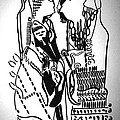Looking for design inspiration? Browse our curated collections!
Joined
2009
Followers
380
Visitors
1,487,998

Introduction
The preparations for any traditional introduction (an introduction ceremony acts as the traditional/cultural marriage ceremony). Kwanjula basically means to introduce. It is a day when the bride to be introduces her future husband (and his people who escort him) to her parents and relatives. But from the day the ceremony is held, you will like it for the rest of your life because of the cultural and organized displays, as well as the value that many people continue to attach to this ceremony called Kwanjula Explanation of some of the terminology used: Buganda- The Buganda Kingdom is found in central Uganda Muganda- A person from Buganda. Baganda- People from Buganda. Luganda- Language spoken by people from Buganda. Kiganda- Used to describe something that is "of Buganda". At the beginning of Kwanjula, the husband to be has to go and see one of the lady's aunties, the one she has chosen to act as Ssenga - the official aunt. The Ssenga is very central to the Kiganda marriage ceremony and is a respected role that many ageing Baganda women yearn to perform. You are required to write a letter to the lady's family, the bazeyi or elders. The letter has to be in flawless Luganda and has to be written through the Ssenga or aunt who then becomes the official go between the two parties. Some people are good at writting these letters, so they are hired to do the job. They are mostly old men. The letter is then taken to the Ssenga (with little money for transport of course) to take it to the Bakulu Bano (fellow respected elders). One of the contents of the letter is asking to be allowed to get born in the in-laws family, by going there to ask for their daughter's hand in marriage. It takes less than two good weeks to get the reply. The Bakulu accept in writing and they specify the date for the husband to be, to 'get born into their family'. Its also in the reply that the mzee ( father in-law) specifies his Mutwalo, what could be taken as bride price. Some fathers in -law don't ask for alot of Mutwalo (bride price), Actually, some ask for either a Bible or a Hymn book or both as Mutwalo, which confirm that this is just a traditional symbol for the parents to give away their daughter. However, some ask for other things. It might not be a surprise when a certain father in- law asks for a plane!!!!!! (Am kidding) :) Later, some 2 0r 3 meetings have to be organised. These meetings provide a rallying ground for friends to contribute the little they have and more importantly give a base for good counsel on what is required or should be done for the Kwanjula to be a sounding success. While the Mutwalo is the traditional bride price required by the father in-law, there are a lot of other required items that have to be taken along. Though they are optional, these items have over time become a basic requirement at any ceremony and they are carried in traditionally made baskets. You have to buy all kinds of fruits and vegetables (all types actually), except egg plants and a few others. There also has to be bread (a good number of loaves), sugar, salt, soap, paraffin, cooking oil, curry powder, and a host of related items which you can only remember and or buy with the help of knowledgeable friends or advisers. On some ceremonies, I have seen people bring some animals like cows Then there is the Kanzus for the Father in-laws and brother in-laws, Gomesis for mother in-laws and Ssengas (Kanzu and Gomesi are cultural dresses for males and females respectively). These are a must. You also have to prepare money for the envelopes- for the father in-law, mother in-law, Ssengas, brother in-laws (with a special one and a cock for the official brother in-law). Kwanjula is a battle between spokesmen The traditional marriage ceremony is a battle of cultural tongue-twisting between representatives of the two sides who engage each other in a question and answer challenge or in knowing, mentioning and following century old norms and traditions. Both families are required to have a spokesman to speak for them. The spokesman takes the role of the final emissary on the day of introduction and he has to pull a lot of antics learned from tradition and experience to engage or answer challenges from the other side's spokesman. It is the battle (friendly and of words) between the two that makes the Kwanjula and the whole ceremony memorable and unique from any other ceremony. On this Kwanjula day, little is required from the husband to be or the Son in-law. He has to say nothing on that day. Having bought everything required and dressed properly in coats and Kanzus for males Gomesis or long shawls for females, all he has to do, together with his entourage is sit and enjoy the battle between the two spokesmen. The rest of the ceremony is as interesting as the gifts (which are left outside) are brought and allocated to the different beneficiaries, and the hosts lay their demands and wishes on the new family. Once the gifts are brought, the host's spokesman may ask the bride and Ssenga whether they should accept the gifts. The obvious answer is "yes" This is followed by more clapping, and more excitement. On this day of Kwanjula, the son in- law comes with rings that denote marriage. It's at this stage that rings are exchanged and cut the cake to crown the ceremony that ends with meals. The official church wedding takes place some few weeks or months after Kwanjula